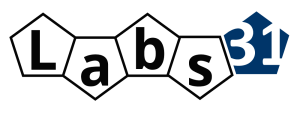A laboratory has to meet many requirements in the field of safety and the environment. There are many sources of danger in a laboratory that could potentially be a risk. That is why it is very important that your laboratory equipment is geared to safety.
Laboratory safety
In order to set up a laboratory as safely as possible, several points must be considered. Think about:
- the furnishing of business premises
- access to the laboratory
- instructions and good practices
- maintenance and checks.
Of course, each approach to your laboratory furnishing depends on the type of laboratory .
Laboratory equipment:
In order to comply with Dutch labour and fire laws, the layout of your lab's premises must be in accordance with the following standards:
Selecting suitable laboratory furniture to ensure safety is an important part of your laboratory set-up. One way to provide insight into the use of laboratory equipment is a spot plan, which provides a clear division of the laboratory.
The floors and walls:
The floor, wall and ceiling covering from a laboratory must be adapted to the planned activities. The walls must also be sufficiently water resistant. This is so that they can be cleaned properly and that they cannot be damaged by liquid splashes.
The work tables:
The worktables are resistant to the products used, easy to clean and water-resistant.
Ventilation:
For laboratory safety, it is important that the air that is breathed is healthy. For this reason, one or more fresh air supplies must be present. This is also necessary when actions take place in the lab that gives off vapours or gases. The ventilation system will provide fresh air.
Of course, there must also be a possibility to easily switch off the ventilation in the event of a fire.
Learn more about selecting the right and safe options in laboratory design here.
Access to the laboratory:
In order to guarantee laboratory safety, it is wise to have good access to the laboratory. Emergency services must be able to access easily if necessary. In order to make this safe for everyone, it is important that entrance doors provide hazard indications of the risks that may be entered inside.
In addition, protective aprons must be present at the entrance of the laboratory.
Instructions and good practices:
Good laboratory practices (GLP) are about quality assurance. It is a system that describes the guidelines that are internationally recognized. Even though good laboratory practices are primarily intended for large companies and institutes, certain standards are also binding for each laboratory.
Think of a course of action regarding the management and disposal of waste and liquid emissions:
- Should not be poured into the sink
- Must be kept separately
- Must be disposed of as hazardous waste
In addition, it is recommended to have at least one fire extinguisher in the laboratory.
Maintain and check:
Keeping track of the spaces is important for safety in a laboratory. The following tasks should be performed regularly:
- Cleaning the materials
- Wash regularly to avoid dust (dangerous products can build up in dust)
- Clean work tables after every working day
It is also important to regularly check the laboratory equipment. This looks at:
- Fume cupboards
- Autoclaves
- Liquid Nitrogen Tanks
- gas installations
How can we help you?
Let us meet and talk about your challenges, looking for the best possible solution for you and your company!
We can help you with consultancy, project management and turnkey laboratory projects.

